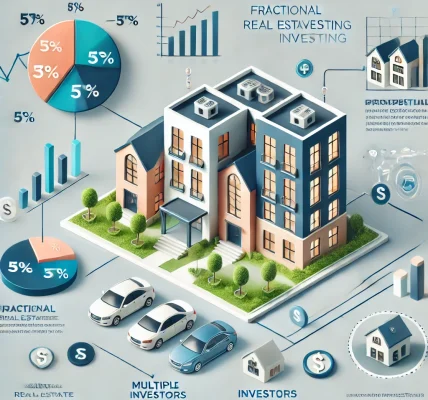Introduction
Investing in real estate is one of the most effective ways to build wealth. However, choosing the right investment strategy can be challenging. Two of the most popular strategies are Fix and Flip and Buy and Hold. Each comes with its unique set of benefits, risks, and financial implications. This DIY guide will help you understand both approaches, analyze their pros and cons, and determine which strategy aligns with your financial goals.
What is Fix and Flip?
The Fix and Flip strategy involves purchasing undervalued or distressed properties, renovating them, and selling them at a profit within a short timeframe. This strategy requires a keen eye for identifying good deals, strong project management skills, and knowledge of the real estate market.
How Fix and Flip Works:
- Find a Property – Investors search for foreclosures, short sales, or properties in need of significant upgrades.
- Purchase at a Discount – The goal is to buy below market value to maximize profit.
- Renovate Efficiently – Investors make strategic improvements that increase property value while staying within budget.
- Sell for a Profit – The property is listed and sold quickly to capitalize on market conditions.
Pros of Fix and Flip:
✔ Quick Profits – You can earn significant returns within months instead of years. ✔ Less Long-Term Risk – You’re not exposed to market fluctuations over long periods. ✔ No Tenant Management – Avoid dealing with renters, vacancies, or property management hassles.
Cons of Fix and Flip:
❌ High Initial Capital Required – Purchasing and renovating a home requires significant investment. ❌ Market Dependent – If the market slows, selling could take longer than expected. ❌ Unexpected Costs – Renovation projects often face delays and unplanned expenses.
What is Buy and Hold?
The Buy and Hold strategy involves purchasing a property and keeping it for an extended period, generating rental income and benefiting from long-term appreciation.
How Buy and Hold Works:
- Find a Property with Rental Potential – Investors look for properties in high-demand areas with strong rental yields.
- Finance the Purchase – This strategy often involves mortgages, and investors may leverage financing options.
- Rent the Property – Tenants move in, providing a steady stream of income.
- Long-Term Appreciation – Over time, the property’s value increases, creating equity.
- Sell at Peak Value (Optional) – Investors can sell the property when market conditions are favorable.
Pros of Buy and Hold:
✔ Passive Income – Earn regular rental income while building equity. ✔ Tax Advantages – Investors benefit from deductions on mortgage interest, depreciation, and repairs. ✔ Long-Term Wealth Building – Real estate typically appreciates over time, increasing net worth. ✔ Leverage Opportunities – You can use mortgage financing to invest with less upfront capital.
Cons of Buy and Hold:
❌ Market Fluctuations – Economic downturns can impact property values and rental income. ❌ Property Management Responsibilities – Maintaining a property and dealing with tenants requires effort and expenses. ❌ Illiquidity – Unlike flipping, your capital is tied up for a longer period.
Fix and Flip vs. Buy and Hold: Side-by-Side Comparison
| Aspect | Fix and Flip | Buy and Hold |
|---|---|---|
| Investment Timeline | Short-term (3-12 months) | Long-term (years or decades) |
| Profit Source | Quick resale profits | Rental income + property appreciation |
| Risk Level | Higher (market fluctuations, renovation issues) | Moderate (tenant management, long-term value changes) |
| Capital Requirement | High (purchase + renovation costs) | Moderate (mortgage financing available) |
| Effort Required | Intensive (project management, quick sales) | Ongoing (tenant relations, maintenance) |
| Tax Implications | Short-term capital gains tax applies | Long-term tax benefits and deductions |
| Liquidity | High (sell property quickly) | Low (capital tied up for years) |
Which Strategy is Best for You?
Fix and Flip is Best If:
✅ You have strong cash reserves or access to short-term financing. ✅ You have experience in real estate, construction, or project management. ✅ You are comfortable with high-risk, high-reward opportunities. ✅ You prefer shorter investment periods with quick turnarounds.
Buy and Hold is Best If:
✅ You want long-term financial stability and passive income. ✅ You have patience for market appreciation and value accumulation. ✅ You are willing to manage tenants and property maintenance. ✅ You prefer steadier, lower-risk investments with long-term gains.
Legal Considerations for Both Strategies
Regardless of which strategy you choose, it’s important to stay compliant with real estate laws and tax regulations.
For Fix and Flip:
- Ensure you comply with zoning laws and renovation permits.
- Work with licensed contractors to avoid legal disputes.
- Be aware of capital gains taxes on short-term property sales.
For Buy and Hold:
- Understand landlord-tenant laws to protect your rights.
- Get proper rental property insurance to mitigate risks.
- Maintain accurate tax records for depreciation and deductions.
Final Thoughts: Finding Your Best Fit
Both Fix and Flip and Buy and Hold have their advantages and drawbacks. Your decision should align with your financial situation, risk tolerance, and investment goals. If you want fast profits and are comfortable with market volatility, Fix and Flip might be the right choice. If you’re looking for passive income and long-term wealth accumulation, Buy and Hold is a solid strategy.
Whichever strategy you choose, conducting thorough research, due diligence, and financial planning is key to success in real estate investment.




